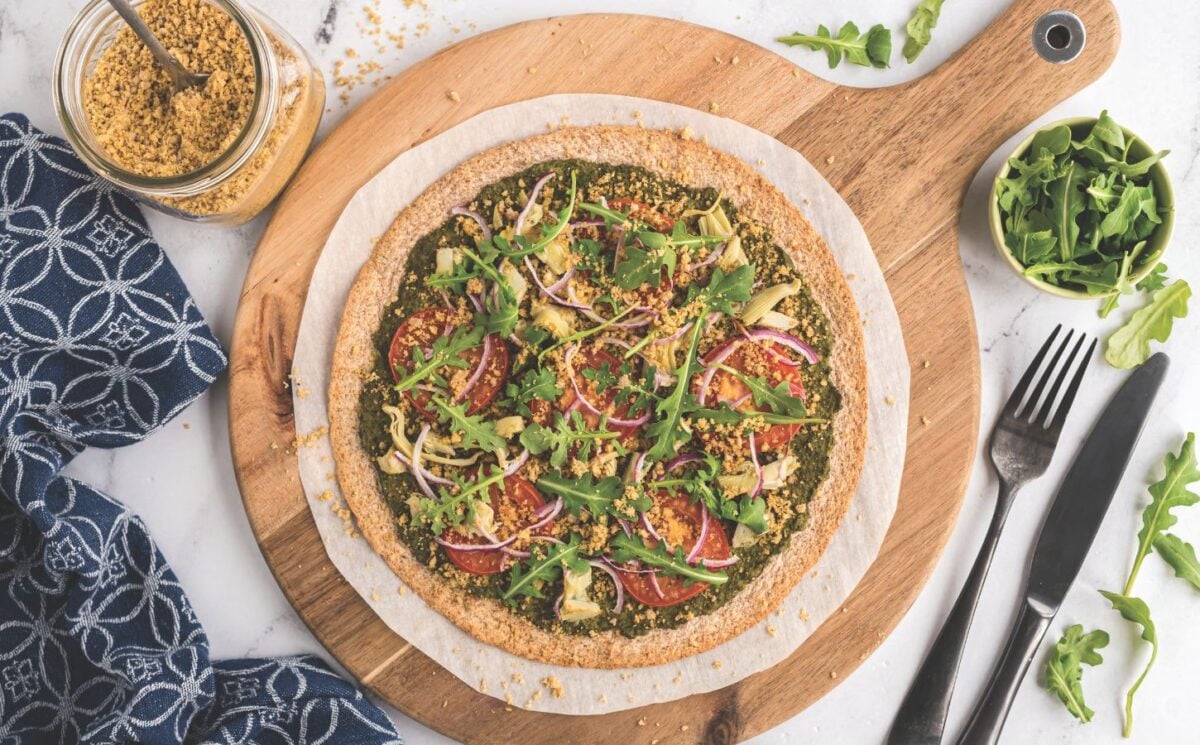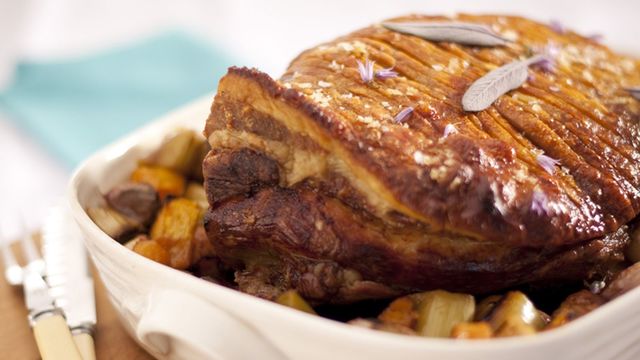
-- Shares Facebook Twitter Reddit Email In Pete Wells's review for The Noortwyck in The New York Times last November, he wrote that Chef Andy Quinn "finds the middle ground between grandeur and informality," adding that he's "exacting and precise, with a whole arsenal of skills and a minimalist sensibility that calls for most of the technical stuff to be tucked quietly into dishes that look simple and straightforward, even when they’re not." Robert Sietsma, at Eater , wrote in April 2023 that the Noortwyck is a "handsome but casual restaurant" that "may sound snooty; it's anything but." Clearly, Quinn’s overseeing of the restaurant has made it appointment dining for many New Yorkers , as well as others who make the trek to try the food — a wise move, to be sure Related Your favorite chef’s favorite chef: How Blanca’s Victoria Blamey is redefining fine dining Chef Andrew "Andy" Quinn, who grew up in Leicester, England, before moving to the United States to work at NYC's famed Eleven Madison Park, opened The Noortwyck in 2022 with co-owner and sommelier Cedric Nicaise.
Quinn is meticulous about the food served at his restaurant — as all chefs should be. Quinn recently shared that the restaurant’s ethos is “quality prevails.” Named after the original Dutch settlement on Manhattan where it stands, The Noortwyck offers a “timeless, New American” menu — a focus that’s evident at first glance.
(He’s also partial to a bread course, which I adore!) Quinn also spoke with Salon about the restaurant's opening, differences between the U.S. and UK dining scenes, signature dishes, efforts to reduce food waste, and his plans for The Noortwyck’s future.
Chef Andy Quinn (Photo by Ileene Cho) The following interview has been lightly edited for clarity and length. How did you imbue your experiences from Hibiscus and Eleven Madison Park into The Noortwyck? My time at Hibiscus and EMP, along with my entire culinary background, was rooted in high-end, precise techniques and classical training. Working with the finest ingredients helped to foster a culture of innovation in my cooking.
At The Noortwyck, I’ve taken these refined techniques I’ve learned with high quality ingredients and presented them in a much more approachable, cost-effective fashion, creating an inviting atmosphere that feels accessible for an everyday neighborhood restaurant. All of the Noortwyck menus sound magnificent! I love that the menu has a dish with albufera sauce on it, too, which I always think is so underutilized. Practically every item is just mouth-watering.
How do you normally approach menu development? Menu development is led by the seasons and local markets. While we have a few dishes on the menu that have become classics that our guests cherish and don’t change, new ideas often arise from what’s coming in fresh from the market. We aim to keep the menu dynamic and reflective of what’s available.
Can you talk to me a bit about how you and Cedric Nicaise work together and how that partnership helps to define the culinary identity of The Noortwyck. Trust is the biggest tenant of Cedric’s and my working relationship. We respect each other’s particular areas of expertise; culinary is my identity while the wine and everything front of house is his.
Cedric would never dictate what would go or come off the menu, the same way I would never tell Cedric how the dining room should be run or what’s on the wine list. This collaborative approach allows us to maintain distinct culinary identities while enhancing the overall experience. I'd love to hear a bit about the name, which I know stands for "north district.
" The name comes from our desire at the start of the project to honor tradition and history. The neighborhood was originally colloquially termed The Noortwyck, which geographically was the north district of the Dutch settlement of Manhattan in 1624. The website notes that the restaurant "has a timeless, new American menu focusing on NY Producers and purveyors alongside a vast and fun wine list.
" Can you elaborate a bit on that? By “timeless”, we mean there’s recognizable, approachable dishes on the menu that appeal to a vast audience. “New American” signifies the cuisine is influenced by all the cultures that are present in New York City right now. We keep the wine list vast and fun, showcasing exciting selections and offer options for all tastes and palettes.
We need your help to stay independent Subscribe today to support Salon's progressive journalism My brother has always had an obsession with Beef Wellington. Can you talk a bit about the process behind yours? We prepare everything from scratch. We get our beef on Wednesdays, clean it and create all the necessary components including the crepes, mushroom duxelle and puff pastry on Thursdays.
On Fridays, it gets rolled and chilled down, applying finishing touches on Saturday, so it’s ready to be roasted by Sunday afternoon. What would you say is the ethos of Noortwyck? Quality prevails. Do you have a personal "signature dish" at the restaurant? Could be the one that sells the most, could be the one you have most personal affinity towards — up to you! Whichever pastas are on the menu at the time.
I think it’s something that we accidentally fell into here. Although I have no formal training in pasta making, it’s a personal passion that unexpectedly flourished here. There’s always a lot of emotion that goes into making pasta, it’s a very personal thing and I think it shows in every pasta dish we serve here.
I adore the sound of bread courses. Is that something that changes often? I love bread and it was really important when opening the restaurant that we had fresh bread made in house. I have to credit Chef Ileene for creating our famous Seeded Parker House Loaf, which was initially a trial and has now become a beloved staple on the menu and something we can’t change.
So to answer your question, our bread is not something that changes often. I'm a cheese guy through and through and I see so many wonderful varieties on your menu. How do you go about ensuring you're procuring the highest quality cheeses? We do regular tastings with purveyors such as Chef Collective and Natoora out of Brooklyn and Murray’s Cheese across the street.
Every few months they’ll bring cheeses in for us to taste and we usually find something that might pair well with our menu, we’re always looking for exciting flavors or stories to share. We currently have a “Whitney” cheese on the menu, crafted at Jasper Hills Creamery in Vermont. The cool thing about it is that it's European style Alpine cheese and made with unpasteurized cow’s milk, which is pretty unique in the US and I knew I wanted to get it on the menu.
Duck Bun from The Noortwyck (Photo by Ileene Cho) How would you differentiate between restaurant culture as far as the UK and US? In my experience, New York emphasizes a more holistic dining experience. The wine, service, drinks, ambiance and vibe are all equally as important as the food or price you're paying. Everything plays a part in the experience.
In London, there’s far more emphasis put on the food than anything else, I feel. Whenever I go back to London I am always slightly surprised at the level of service. I’ve been to some places with amazing food, but their cocktail program is non-existent or the vibe isn't there.
On the flip side, you can eat at a restaurant in New York where it's impossible to get a reservation but the food isn’t very good, while in London if the food isn’t great, the restaurant won’t last. Regarding clientele, diners in the UK seem to be more open minded in trying different flavors or cuisines, whereas New Yorkers know exactly what they want and they are going to find it. Want more great food writing and recipes? Subscribe to Salon Food's newsletter , The Bite.
Do you have a number one favorite ingredient to work with? Foie gras is my favorite. I love its versatility – you can prepare it hot or cold and turn it into mousse or ice cream. It’s something not commonly found on menus because it’s high cost, but there are ways to incorporate it into dishes to add a piece of luxury that you don’t get everyday.
At The Noortwyck, we have the foie gras butter that pairs with our Duck Bun and we also include it in the albufera sauce for our chicken dish. It’s always been one of my favorite things to work with. Is there a standout menu item for you across all of your restaurants? Or one that particularly resonates with customers? Probably the duck.
It has become another signature dish on our menu. Every great chef I've worked with has had their own unique duck dish, which has always been a standout menu item at those restaurants. I challenged myself in creating my own version and preparing a dish that blends various techniques I’ve learned through the years.
What stands out for you as a formative moment that got you into cooking or food at large? Cooking for my siblings when we were younger definitely helped shape my passion for cooking. My parents were working full time, so it was up to one of us to cook for the remaining two and I didn’t like the food either of my siblings made, so I decided to take charge. I quickly discovered I was pretty good at it, which kind of ignited my enjoyment and satisfaction I gained through cooking.
What would you say are your three most used ingredients? Butter, calabrian chili and sherry vinegar. What is your favorite cooking memory? Grilling outside by a beach somewhere, with good friends and cold beer! What’s your biggest tip for cutting down on food waste? Avoid over ordering. Many places tend to order too much food, which often ends up getting thrown away or going bad.
For me, it’s much easier to buy smaller quantities and make them last rather than buying too much of something and figuring out how to use it or make it last. How do you practice sustainability in your cooking and in your restaurants? We utilize all of the ingredients as much as possible. All our protein comes in whole – be it fish, duck or chicken etc.
We break them down as needed and repurpose what is left to make sauces, stocks or other dishes. For example, we buy the ducks whole for our dry-aged duck breasts and use the legs for the filling in our duck bun. Would a non-drinker still be able to enjoy any N/A wine and cocktail offerings at The Noortwyck? Absolutely.
We’re kind of famous for our Shift Drink, a non-alcoholic option that sells almost as much as our regular cocktails. We have a very strong and robust N/A cocktail and beer program. What's next for you? For The Noortwyck? We are intent on continuing to grow the team and culture here at The Noortwyck.
We’re excited to explore new opportunities outside these four walls while continuing to build our classic dishes and bring some exciting new ones to our loyal clientele base. Read more about this topic Edy Massih talks his new cookbook, Lebanese food and why restaurants are "built for competition" "Cooking saved my life more than once": Chef Einat Admony on her culinary memoir "Taste of Love" "I am an artisan": Chef Eric Ripert on meditation, demystifying seafood and his next chapters By Michael La Corte Michael is a food writer, recipe editor and educator based in his beloved New Jersey. After graduating from the Institute of Culinary Education in New York City, he worked in restaurants, catering and supper clubs before pivoting to food journalism and recipe development.
He also holds a BA in psychology and literature from Pace University. MORE FROM Michael La Corte Related Topics ------------------------------------------ Chef Andy Quinn Food Interview New York City Q&a Restaurants The Noortwyck Related Articles Advertisement:.














